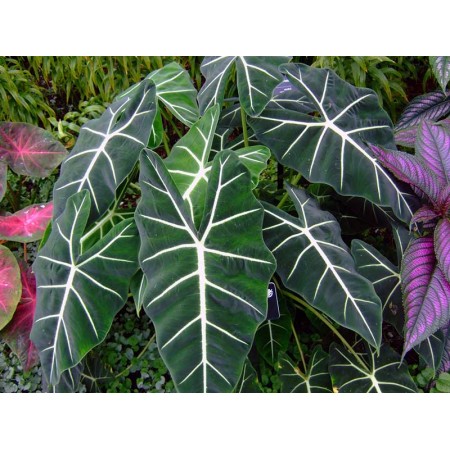Growing Alocasia at Home

Alocasia is a flower native to places with a tropical climate. However, it can be grown at home, observing certain rules in the care. It cannot be said that a florist who has decided to plant these flowers at home will not experience any difficulties. But this representative of the flora, in turn, will delight you with abundant flowering and stunningly charming variegated leaves.
Choosing a place in the house for a flowerpot
Like other types of tropical plants, alocasia does not perceive the presence of direct sunlight too favorably. But in general, it is better not to leave it without light, so when choosing a place in the house, keep in mind that there should be a lot of diffused solar ultraviolet radiation. In winter, when daytime is significantly reduced, it is recommended to send additional light sources to the flowerpot with alocasia using standard fluorescent lamps.
As for air, alocasia suffers no less from drafts and sharp temperature changes than from direct sunlight. But if in the second case, burns form on the leaves, then the flower will simply fade from the cool. Accordingly, for the period of ventilation of the room (especially in the cold season), it is recommended to transfer the container with the plant to another room.
How to water
Depending on the time of year, the number of water procedures varies from once a day to once every few days. In summer, alocasia needs a large amount of fluid, but an excess of moisture should not be allowed. In winter, you can water the plant no more than once every three days, contributing to a comfortable wintering of the flower for three months.
For watering, you should use the settled liquid, which is collected in advance and is kept in the tank for a day. Remember that too hard tap water can cause various diseases and rapid death in alocasia.
Air temperature and humidity level
In general, the optimal temperature in the room for alocasia is considered an indicator in the range from 20 to 25 degrees of heat - in the summer, and at least 16 degrees of heat - in the winter. The higher the reading on the thermometer, the more moisture the flower consumes. Accordingly, it is recommended to carefully monitor that the earthen lump does not dry out due to the heat standing outside the window.
Every tropical plant needs well-moistened air. If it is impossible to maintain a moisture-saturated atmosphere in a room, then this problem can be solved by spraying alocasia leaves from a spray bottle or installing a pallet with expanded clay or moss.
The presence of additional containers with liquid next to the pot is not superfluous. Believe me, this solution will allow you to provide for this whimsical home inhabitant the most comfortable conditions conducive to its constant growth.